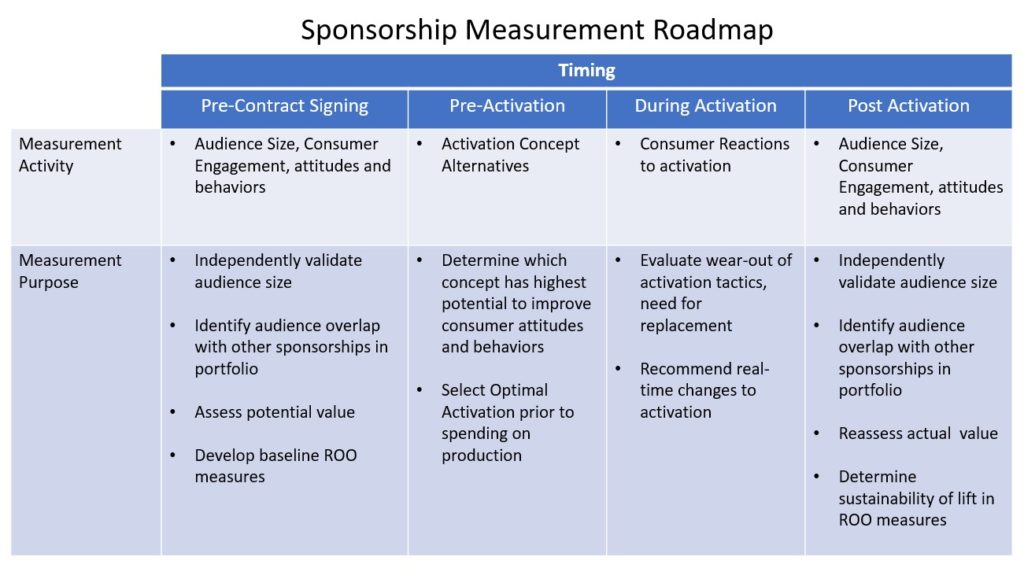
I. Introduction
Sponsorship sales play a crucial role in driving revenue growth for businesses across various industries. Whether it’s sports events, conferences, or community activities, sponsors provide financial support in exchange for brand exposure and the opportunity to connect with their target audience. This blog will explore the importance of sponsorship sales and strategies to maximize revenue generation.
The Importance of Sponsorship Sales in Revenue Generation
Sponsorship sales are vital for businesses for several reasons:
1. Revenue Generation: Sponsorship sales provide a significant source of revenue for organizations. By securing sponsors, businesses can fund their events or initiatives and invest in their growth.
2. Brand Exposure: Sponsors gain visibility and exposure among their target audience through branding opportunities at sponsored events. This exposure helps them build brand recognition and enhance their reputation.
3. Audience Engagement: Sponsors have the chance to engage with their target audience directly. Events offer a platform for sponsors to interact with attendees, showcase their products or services, and generate leads or sales.
Key Challenges in Sponsorship Sales
While sponsorship sales have numerous benefits, they come with their own set of challenges. Some of the key challenges faced by organizations include:
1. Identifying Suitable Prospects: Finding the right sponsors that align with the objectives and values of an event or initiative can be challenging. Organizations need to identify potential sponsors whose target audience overlaps with their own.
2. Building Relationships: Building and nurturing relationships with potential sponsors requires time and effort. Organizations need to understand the needs and objectives of sponsors to create compelling sponsorship packages.
3. Measuring Return on Investment (ROI): Demonstrating the value and impact of sponsorship to sponsors is essential. Organizations need to develop metrics and measurement tools to assess the success of sponsorships and report back to sponsors.
In the following sections, we will delve deeper into the strategies and best practices that organizations can employ to overcome these challenges and unlock the full potential of sponsorship sales as a revenue-generating tool. Stay tuned for valuable insights and actionable tips that can help businesses thrive in the competitive world of sponsorship sales.
II. Building a Strong Value Proposition
Understanding the Needs of Potential Sponsors
To successfully drive revenue growth through sponsorship sales, it is essential to have a deep understanding of the needs and goals of potential sponsors. By understanding their specific objectives, you can tailor your sponsorship offerings to meet their needs and provide them with valuable opportunities for brand exposure and engagement.
Here are some key steps to better understand the needs of potential sponsors:
- Conduct market research: Research the target audience and industry trends to identify the types of companies that are most likely to be interested in sponsoring your event or organization. This will help you create a targeted list of potential sponsors.
- Analyze past sponsorships: Review past sponsorship deals and evaluate which ones were successful and why. Look for common themes and patterns to better understand what types of sponsorship offerings are most attractive to potential sponsors.
- Engage in conversations: Reach out to potential sponsors and have open conversations to understand their objectives, challenges, and preferences. Ask questions about their marketing goals, target audience, and desired return on investment from sponsorships.
By taking the time to understand the needs of potential sponsors, you can position your sponsorship offerings as valuable solutions that align with their goals and provide a strong return on investment.
Creating a Compelling Sponsorship Package
Once you have a clear understanding of the needs of potential sponsors, it’s time to create a compelling sponsorship package that showcases the value they will receive by partnering with your event or organization. Here are some key tips to create an effective sponsorship package:
- Highlight benefits: Clearly outline the benefits and opportunities that sponsors will receive, such as logo placement, brand visibility, speaking opportunities, and access to the target audience. Emphasize the unique and exclusive opportunities that can help sponsors achieve their marketing objectives.
- Provide customization options: Offer flexible sponsorship packages that allow sponsors to customize their involvement based on their specific goals and budget. This enables sponsors to choose the options that best align with their marketing strategies.
- Showcase success stories: Share success stories from past sponsors to demonstrate the positive results they achieved through their partnership with your event or organization. This social proof can help build trust and credibility with potential sponsors.
By creating a compelling sponsorship package that addresses the needs and goals of potential sponsors, you can attract their interest and drive revenue growth through successful sponsorship sales.

Source: www.eventmobi.com
III. Identifying Target Sponsors
To drive revenue growth through sponsorship sales, it’s crucial to identify and target potential sponsors who align with your event or organization’s goals and values. Here are some strategies to help you identify and engage with the right sponsors:
Researching and Analyzing Potential Sponsors
1. Define Your Target Audience: Start by clearly defining your target audience for the event or organization. This will help you identify sponsors who are looking to reach the same audience.
2. Conduct Market Research: Research and analyze the market to identify potential sponsors who have a strong presence in your industry or are known to support events or organizations similar to yours. Look for sponsors who have a history of successful partnerships and align with your brand values.
3. Use Social Media Listening: Leverage social media platforms to identify potential sponsors who are active in engaging with their audience and show interest in sponsoring events or organizations. Monitor hashtags, keywords, and conversations related to your industry to find relevant sponsors.
4. Attend Industry Events: Attend industry conferences and events to network with potential sponsors directly. This will give you an opportunity to meet sponsors face-to-face, pitch your event or organization, and build relationships.
Segmenting Sponsorship Opportunities
Once you have identified a list of potential sponsors, it’s essential to segment your sponsorship opportunities to match their specific needs and objectives. Here are some ways to segment sponsorship opportunities:
1. Tiered Sponsorship Levels: Create tiered sponsorship packages that offer different levels of benefits and exposure based on the sponsor’s budget and goals. This allows sponsors to choose a package that aligns with their objectives.
2. Targeted Activation Opportunities: Tailor sponsorship activation opportunities to match the sponsor’s target audience and goals. For example, if a sponsor is looking to increase brand awareness among millennials, offer social media promotions or experiential marketing opportunities that target this specific audience.
3. Customized Benefits Package: Work closely with potential sponsors to understand their specific needs and objectives. Customize the sponsorship benefits package to align with their goals, whether it’s brand visibility, lead generation, or customer engagement.
4. Data-driven Approach: Utilize data and analytics to measure the impact and ROI of sponsorship opportunities. This will help you demonstrate the value of the sponsorship to potential sponsors and build long-term partnerships.
By researching and analyzing potential sponsors and segmenting sponsorship opportunities, you can effectively target the right sponsors and maximize your revenue growth through successful partnerships.

Source: eventible.com
IV. Crafting Effective Sponsorship Proposals
A well-crafted sponsorship proposal can be the key to securing valuable partnerships and driving revenue growth. Whether you are a small business or a large organization, here are some essential components to include in your sponsorship proposal:
Components of a Winning Sponsorship Proposal
1. Introduction: Begin your proposal with an engaging introduction that highlights your organization’s mission, values, and the benefits of partnering with you. Clearly state the purpose of the proposal and what you are seeking from potential sponsors.
2. Audience Analysis: Provide a detailed analysis of your target audience, including demographic information, consumer behavior, and engagement metrics. Show sponsors that you have a deep understanding of your audience and how their products or services align with their interests.
3. Sponsorship Opportunities: Present a range of sponsorship opportunities available, such as event sponsorships, product placements, or digital advertising. Include details about the reach and visibility of each opportunity, as well as the potential ROI for sponsors.
4. Benefits for Sponsors: Clearly outline the benefits sponsors can expect from partnering with your organization. This can include brand exposure, access to a targeted audience, networking opportunities, and the ability to align with a reputable brand.
5. Customization and Flexibility: Highlight your willingness to tailor sponsorship packages to meet the specific needs and objectives of each sponsor. Emphasize your flexibility in creating unique activation opportunities that align with the sponsor’s branding and marketing goals.
Tailoring Proposals to the Needs of Each Sponsor
To maximize the effectiveness of your sponsorship proposals, it is crucial to customize them for each potential sponsor. Here are a few tips to help you tailor your proposals:
1. Research: Conduct thorough research on each sponsor’s brand, marketing goals, and target audience. This will allow you to better understand their needs and identify opportunities for collaboration.
2. Personalization: Address the sponsor by name in your proposal and reference specific aspects of their brand or previous sponsorships. Show them that you have taken the time to understand their brand and how it can align with your organization.
3. Offer Exclusive Opportunities: Create unique and exclusive sponsorship opportunities that are tailored specifically to the sponsor’s objectives. This could involve customizing event experiences, creating co-branded content, or offering exclusive product showcases.
4. Show ROI: Clearly articulate the potential return on investment for the sponsor, highlighting the value they will receive from the partnership. Provide data and metrics that demonstrate the effectiveness of similar sponsorships or marketing campaigns.
By crafting effective sponsorship proposals and tailoring them to the needs of each sponsor, you can significantly increase your chances of securing partnerships that drive revenue growth and deliver mutually beneficial results.

Source: image.slidesharecdn.com
V. Negotiating and Closing Sponsorship Deals
Effective Negotiation Strategies
Negotiating sponsorship deals requires finesse and strategic thinking to ensure a win-win situation for both parties involved. Here are some effective negotiation strategies to consider:
- Know Your Value: Before entering into negotiations, thoroughly understand the value you can provide to sponsors. This includes the reach and demographics of your audience, the uniqueness of your event or platform, and any additional benefits you can offer.
- Identify Sponsors’ Goals: In order to create a compelling proposal, it is essential to understand the goals of potential sponsors. Research their brand, target audience, and previous sponsorships to align your offerings with their objectives.
- Develop Customized Proposals: Tailor your proposals to each potential sponsor, highlighting the specific benefits and opportunities that align with their goals. This personalized approach demonstrates your understanding of their needs and increases the chances of securing a favorable deal.
- Highlight Exclusivity: Emphasize the exclusivity and limited availability of sponsorship opportunities to create a sense of urgency. This can incentivize sponsors to act quickly and commit to long-term partnerships.
- Flexibility: Be willing to negotiate and adapt your offerings based on the sponsor’s budget and requirements. Showing flexibility and willingness to collaborate can build trust and open doors to new opportunities.
Measuring and Demonstrating ROI for Sponsors
Sponsors are often interested in the return on investment (ROI) they can expect from their sponsorship. It is important to continuously measure, track, and report on the success of their partnership. Here are some strategies to demonstrate ROI:
- Set Measurable Goals: Agree on clear objectives with sponsors before the partnership begins. This could include metrics like brand exposure, lead generation, or social media engagement.
- Collect Data: Gather data throughout the sponsorship period to track the impact of the partnership. This can include website analytics, social media metrics, survey responses, or sales data.
- Analyze and Report: Regularly analyze the collected data and provide comprehensive reports to sponsors that highlight the achieved results. Use visuals such as graphs and charts to make the data more accessible and impactful.
- Post-event Evaluation: Conduct post-event evaluations to gather feedback from attendees and sponsors. This feedback can provide valuable insights into the success of the sponsorship and areas for improvement.
- Long-term Relationship: Treat sponsorship as a long-term partnership rather than a one-time transaction. Continuously communicate with sponsors, offer additional value, and explore opportunities for collaboration in the future.
By effectively negotiating sponsorship deals and demonstrating a solid ROI, you can establish strong partnerships and drive revenue growth for your organization.

Source: huntscanlon.com
VI. Leveraging Sponsorship Relationships
Leveraging sponsorship relationships is a key strategy for driving revenue growth in the world of sponsorship sales. By building long-term partnerships and effectively activating sponsorship agreements, organizations can unlock the full potential of their sponsorships and maximize their revenue opportunities.
Building Long-Term Partnerships
Building long-term partnerships is crucial in sponsorship sales as it allows organizations to establish a strong foundation for ongoing collaboration and revenue generation. Here are some strategies to consider when building long-term partnerships with sponsors:
- Develop a deep understanding of the sponsor’s objectives, target audience, and marketing goals. This will enable you to align your sponsorship opportunities with their specific needs and create customized packages that deliver value.
- Regularly communicate and engage with sponsors to build strong relationships. Keep them updated on the success of their sponsorships and seek feedback to continuously improve your offerings.
- Create unique and memorable experiences for sponsors that go beyond logo placement. Offer opportunities for meaningful interactions with their target audience, such as exclusive meet-and-greet sessions, product demonstrations, or backstage tours.
- Provide value-added benefits such as access to your organization’s networks, industry insights, and cross-promotional opportunities. This will demonstrate your commitment to the success of the partnership and make it more enticing for sponsors to continue investing in your organization.
Activating Sponsorship Agreements
Once sponsorship agreements are in place, it’s crucial to activate them effectively to maximize their impact and revenue potential. Here are some strategies for activating sponsorship agreements:
- Create a comprehensive activation plan that outlines the specific activities, promotions, and marketing initiatives that will be implemented to leverage the sponsorship.
- Utilize multiple channels to reach the target audience and maximize brand exposure. This can include social media campaigns, onsite signage, branded content, and experiential activations.
- Measure and analyze the effectiveness of sponsorship activation efforts by tracking key performance indicators such as brand impressions, engagement levels, and lead generation. This data can be used to demonstrate the value of the sponsorship to sponsors and attract new partners in the future.
- Continuously innovate and explore new ways to activate sponsorship agreements. Stay up-to-date with industry trends, technology advancements, and consumer preferences to ensure the sponsorship activations remain relevant and impactful.
By leveraging sponsorship relationships and effectively activating sponsorship agreements, organizations can unlock new revenue streams, enhance brand reputation, and forge mutually beneficial partnerships with sponsors. It’s a win-win situation that both organizations and sponsors can capitalize on.

Source: www.sponsor.com
VII. Tracking and Evaluating Sponsorship Performance
After securing sponsorships for your event or organization, it is essential to track and evaluate the performance of your sponsorships to ensure they are driving revenue growth and providing a return on investment for both parties involved. Here are some strategies to effectively monitor and evaluate sponsorship performance:
Monitoring Performance Metrics and KPIs
To gauge the success of your sponsorships, it is crucial to establish key performance indicators (KPIs) and metrics to track. Some common metrics to consider include:
- Impressions and reach: Measure the number of times your sponsor’s brand or message was exposed to the target audience.
- Engagement: Track audience interactions and engagement with sponsored content, such as clicks, likes, shares, or comments.
- Conversion rates: Measure the percentage of leads or sales generated as a result of the sponsorship.
- Brand awareness and perception: Conduct surveys or brand sentiment analysis to evaluate changes in brand awareness and perception before and after the sponsorship.
Regularly monitor these metrics throughout the sponsorship period to assess the effectiveness and impact of the sponsorship.
Analyzing the Impact of Sponsorship on Revenue Growth
In addition to tracking performance metrics, it is vital to analyze the overall impact of sponsorships on revenue growth. Here are some strategies to evaluate the financial impact:
- Cost-benefit analysis: Compare the cost of securing the sponsorship to the revenue generated from the partnership. Consider factors such as increased ticket sales, merchandise purchases, or new customer acquisitions.
- Return on investment (ROI): Calculate the ROI by dividing the revenue generated from the sponsorship by the cost of the sponsorship. This will provide a percentage indicating the profitability of the investment.
- Customer segmentation analysis: Analyze the demographics and purchasing behaviors of customers acquired through the sponsorship to identify any variations in revenue or customer lifetime value compared to non-sponsored customers.
Regularly communicate with sponsors to gather feedback on their perceived ROI and use that information to refine future sponsorship strategies.
By consistently monitoring performance metrics and analyzing the impact on revenue growth, you can fine-tune your sponsorship strategies and maximize the value for both sponsors and your organization. Remember to always document and share the results with stakeholders to demonstrate the tangible benefits of sponsorship investments.

Source: cdn.slidesharecdn.com
VIII. Conclusion
In conclusion, driving revenue growth through sponsorship sales is a crucial aspect of any successful business. By implementing effective strategies and staying ahead of future trends, companies can tap into the full potential of sponsorship opportunities. Here are some key takeaways to remember:
Key Takeaways for Driving Revenue Growth through Sponsorship Sales
1. Understand your target audience: Research and identify the demographics and interests of your target audience to attract relevant sponsors who can benefit from reaching these consumers.
2. Develop a compelling value proposition: Clearly articulate the unique benefits and value that your sponsorship opportunities offer to potential partners. Highlight how their brand will be integrated into your events or initiatives to maximize their exposure.
3. Cultivate strong relationships: Build and maintain relationships with sponsors by providing excellent customer service, delivering on promises, and regular communication. Foster long-term partnerships that align with both parties’ goals.
4. Tailor sponsorship packages: Create customized sponsorship packages that offer a range of options to suit different budgets and objectives. Be flexible and willing to negotiate to accommodate sponsors’ specific needs and maximize their return on investment.
5. Measure and track performance: Establish measurable objectives and track the success of sponsorship activations. Provide sponsors with comprehensive reports and data analysis to demonstrate the value and impact of their investment.
Future Trends in Sponsorship Strategies
1. Digital Integration:
As technology continues to advance, digital integration will play an increasingly significant role in sponsorship strategies. Virtual activations, social media campaigns, and personalized digital experiences will become more prevalent.
2. Sustainability and Social Responsibility: Sponsors are increasingly looking for partnerships that align with their sustainability and social responsibility goals. Incorporating environmentally friendly practices and community initiatives into sponsorship opportunities will be essential.
3. Experiential Marketing: Creating memorable and immersive experiences for audiences will remain a key focus in sponsorship strategies. Look for innovative ways to engage and captivate attendees at events, such as interactive installations or augmented reality experiences.
4. Data-driven Decision Making: The use of data and analytics will continue to shape sponsorship strategies. Leveraging data insights and predictive analytics can help identify target audiences, measure performance, and optimize sponsorship activations.
5. Diversity and Inclusion in Sponsorships: Incorporating diversity and inclusion into sponsorship strategies is essential for brands to connect with a wide range of audiences and enhance brand perception. Collaborating with diverse content creators, events, and organizations not only showcases a commitment to inclusivity but also taps into new market segments that may have been overlooked, resulting in more impactful and successful sponsorships.
6. Influencer Collaborations: Partnering with influencers and content creators can provide a unique and impactful way to reach and engage with audiences. Look for influencers who align with your brand and can authentically promote sponsorships.
By implementing these strategies and staying informed about industry trends, companies can unleash the power of sponsorship sales and drive revenue growth for their business.
7. A.I. in Sponsorships: Artificial Intelligence (A.I.) is reshaping sponsorships by enabling precise audience targeting and personalized experiences. By leveraging A.I.-powered tools and platforms, brands can analyze data, gain insights into audience preferences, and optimize sponsorship strategies for maximum impact and return on investment (ROI). Automation through A.I. streamlines tasks like lead generation and customized proposal creation, allowing sales teams to focus on building relationships and closing deals, while emerging A.I. technologies enhance sponsor-client communication, delivering a seamless and engaging sponsorship experience.
Ready to supercharge your sponsorship game? Dive into the ultimate guide on sponsorship sales and discover the magic of our sponsor matching platform at Sponsorscout.com. Unveil a world of opportunities and elevate your sponsorship success today! Click here to learn more

